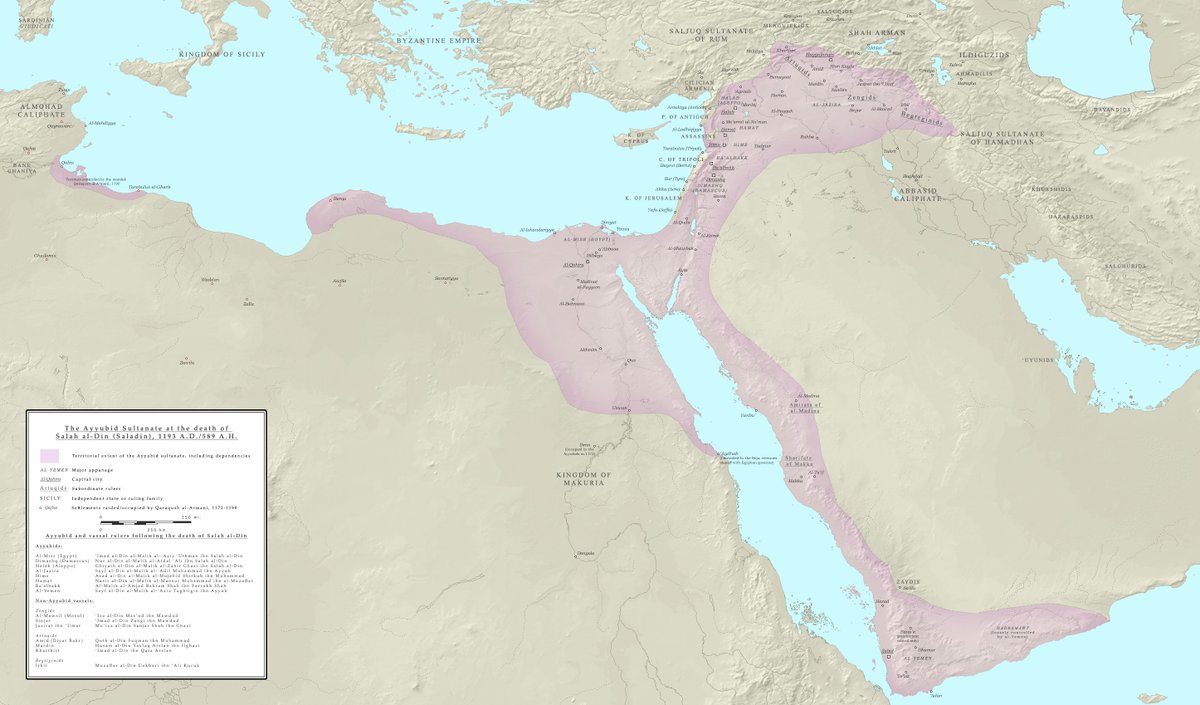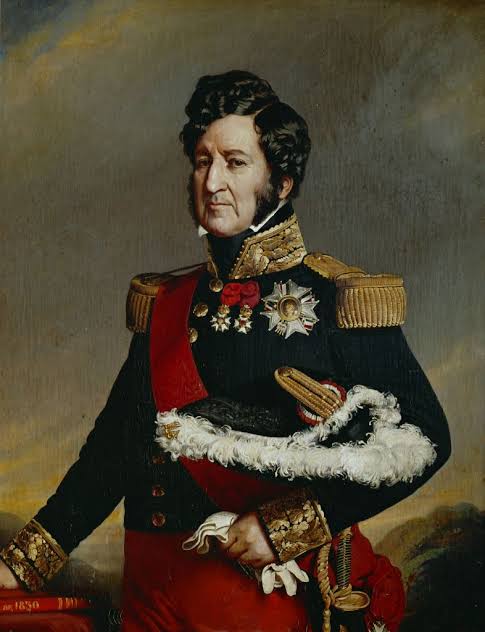The word "Mamluk" means “owned” in Arabic.
As young boys they were taken from their homes, brought to Egypt and forged into the warrior elite.
However, they would not remain servants forever. Eventually, they seized control.
This is the story of the slaves who ruled an empire.
As young boys they were taken from their homes, brought to Egypt and forged into the warrior elite.
However, they would not remain servants forever. Eventually, they seized control.
This is the story of the slaves who ruled an empire.

It is the 12th century AD and the Ayyubids Sultunate is ruling Egypt and Syria.
They starts importing young boys from Central Asia, the Caucasus, and the Turkic steppe.
Why? Because they needed a loyal, highly trained military force separate from local tribal factions.
They starts importing young boys from Central Asia, the Caucasus, and the Turkic steppe.
Why? Because they needed a loyal, highly trained military force separate from local tribal factions.

The Mamluks, however, were no ordinary slaves.
Handpicked for their strength and potential, they were trained in combat, strategy, and horsemanship.
They mastered the art of war—wielding curved swords, lances, and bows with deadly precision.
Handpicked for their strength and potential, they were trained in combat, strategy, and horsemanship.
They mastered the art of war—wielding curved swords, lances, and bows with deadly precision.

Unlike common slaves, they were not treated as mere property.
They were given the finest weapons, taught the ways of leadership, and sworn into brotherhoods of warriors.
Their loyalty was not to a dynasty but to each other.
And that made them dangerous.
They were given the finest weapons, taught the ways of leadership, and sworn into brotherhoods of warriors.
Their loyalty was not to a dynasty but to each other.
And that made them dangerous.

The Ayyubid sultans (successors of Saladin) relied on the Mamluks as their personal army.
But over time, these elite soldiers became more powerful than their masters.
Then, in 1250, they made their move.
But over time, these elite soldiers became more powerful than their masters.
Then, in 1250, they made their move.

When the last Ayyubid sultan died, the Mamluks did the unthinkable—they seized power for themselves.
A slave army had overthrown its rulers.
The Mamluk Sultanate was born.
Egypt, the heart of the Islamic world, was now ruled by former slaves.
A slave army had overthrown its rulers.
The Mamluk Sultanate was born.
Egypt, the heart of the Islamic world, was now ruled by former slaves.

But their rule was immediately put to the test.
A storm was coming from the east.
A force that had burned Baghdad to the ground and slaughtered caliphs.
The Mongols.
A storm was coming from the east.
A force that had burned Baghdad to the ground and slaughtered caliphs.
The Mongols.
In 1260, the Mongol army—unstoppable until now—advanced on the Mamluk-held city of Ain Jalut in Palestine.
Every army before them had been crushed.
But the Mamluks were different.
They knew how to fight fire with fire.
Every army before them had been crushed.
But the Mamluks were different.
They knew how to fight fire with fire.

Using feigned retreats and ambush tactics, the Mamluks lured the Mongols into a trap.
Then they struck with their elite cavalry, cutting through the Mongol ranks.
The tide had turned.
Then they struck with their elite cavalry, cutting through the Mongol ranks.
The tide had turned.

For the first time, the Mongols were defeated in open battle.
The Battle of Ain Jalut wasn’t just a victory—it was a turning point in history.
The Mamluks had done what no one else could: they stopped the Mongol advance.
The Battle of Ain Jalut wasn’t just a victory—it was a turning point in history.
The Mamluks had done what no one else could: they stopped the Mongol advance.

The world took notice.
They crushed the last Crusader strongholds, ending the era of the Crusades.
They ruled Egypt and Syria with an iron grip.
They crushed the last Crusader strongholds, ending the era of the Crusades.
They ruled Egypt and Syria with an iron grip.

But there was a catch:
The Mamluks never passed power down through bloodlines.
Each new sultan was chosen from the ranks of the warrior elite, keeping the cycle of slave to ruler alive.
But this also meant constant infighting.
The Mamluks never passed power down through bloodlines.
Each new sultan was chosen from the ranks of the warrior elite, keeping the cycle of slave to ruler alive.
But this also meant constant infighting.

Assassinations. Power struggles. Coups.
The Mamluks were warriors first, politicians second.
Their greatest enemy came from within.
And this would eventually cost them their empire.
The Mamluks were warriors first, politicians second.
Their greatest enemy came from within.
And this would eventually cost them their empire.
By the early 1500s, a new empire was rising in the east:
The Ottomans.
Armed with gunpowder cannons and muskets, they marched toward Egypt.
The Mamluks—still relying on their cavalry—were unprepared for this new style of warfare.
The Ottomans.
Armed with gunpowder cannons and muskets, they marched toward Egypt.
The Mamluks—still relying on their cavalry—were unprepared for this new style of warfare.

In 1517, the Ottoman sultan Selim I crushed the Mamluks at the Battle of Ridaniya.
The warrior elite had met their match.
Egypt fell.
The Mamluk Sultanate was no more.
The warrior elite had met their match.
Egypt fell.
The Mamluk Sultanate was no more.

But the Mamluks were too valuable to destroy.
The Ottomans kept them in power as administrators and military leaders.
Even without a sultanate, they still ruled behind the scenes.
The Ottomans kept them in power as administrators and military leaders.
Even without a sultanate, they still ruled behind the scenes.
For 300 more years, the Mamluks held influence in Egypt—until one final betrayal.
In 1811, the Ottoman governor Muhammad Ali Pasha invited the remaining Mamluk leaders to a feast in Cairo.
They arrived in full ceremonial dress.
In 1811, the Ottoman governor Muhammad Ali Pasha invited the remaining Mamluk leaders to a feast in Cairo.
They arrived in full ceremonial dress.

As they dined, Muhammad Ali’s troops sealed the gates.
Then, the massacre began.
The last Mamluks—who had once ruled an empire—were cut down in a hail of musket fire.
It was the end of their reign.
Then, the massacre began.
The last Mamluks—who had once ruled an empire—were cut down in a hail of musket fire.
It was the end of their reign.

The Mamluks rose from slavery to build an empire, defeat the Mongols, and rule Egypt for centuries.
They were warriors without equals—until time and technology left them behind.
They were warriors without equals—until time and technology left them behind.

Thanks for sticking with me, I hope you enjoyed reading. If so, follow me @GodPlaysCards and try the Legacy App.
It is a great way to learn on the go, track your journeys, collect the past, and discover hidden gems.
I'm honored you were with me.
Until next time.
It is a great way to learn on the go, track your journeys, collect the past, and discover hidden gems.
I'm honored you were with me.
Until next time.
• • •
Missing some Tweet in this thread? You can try to
force a refresh





















